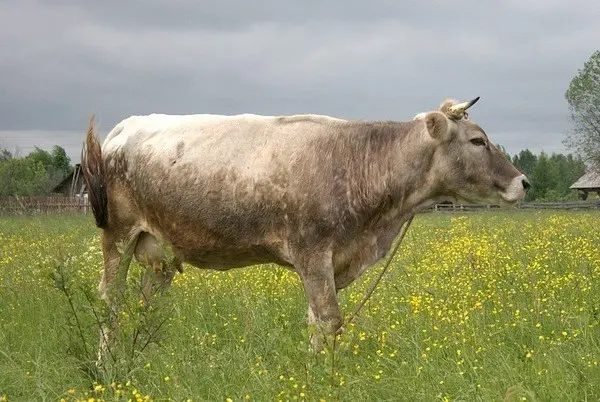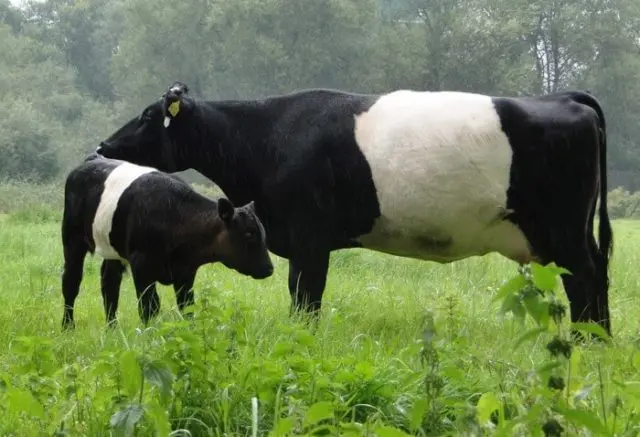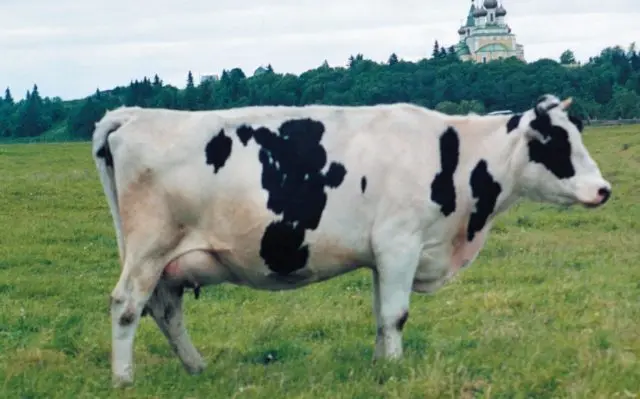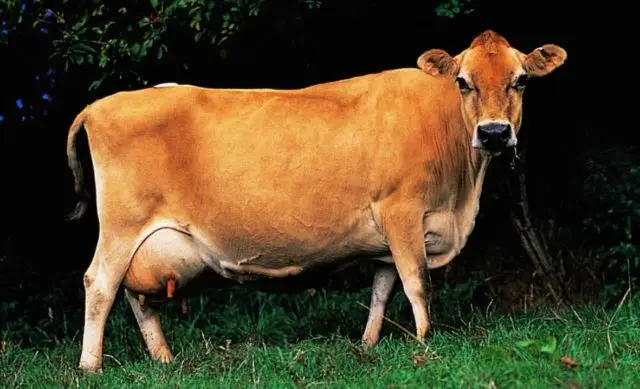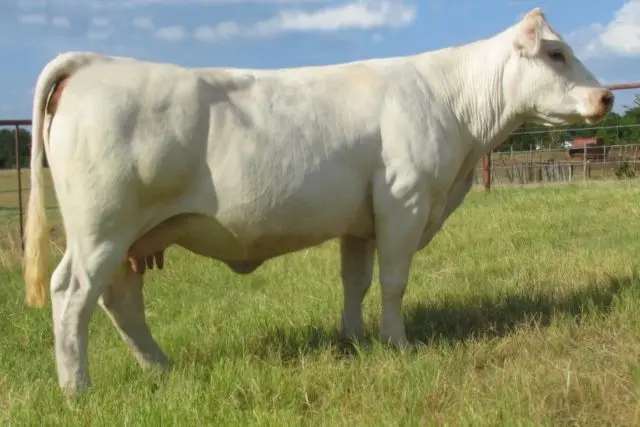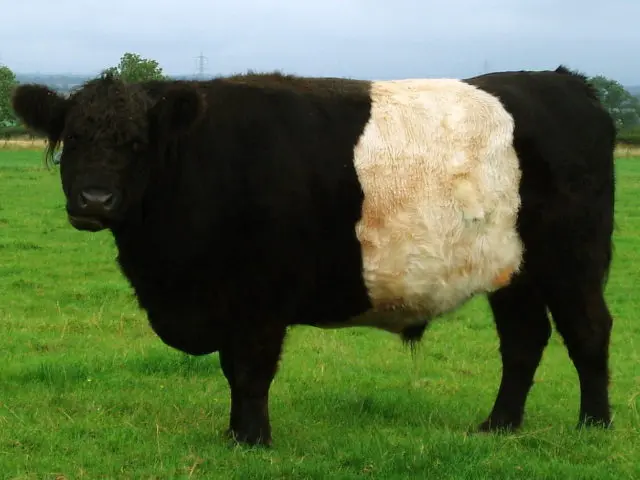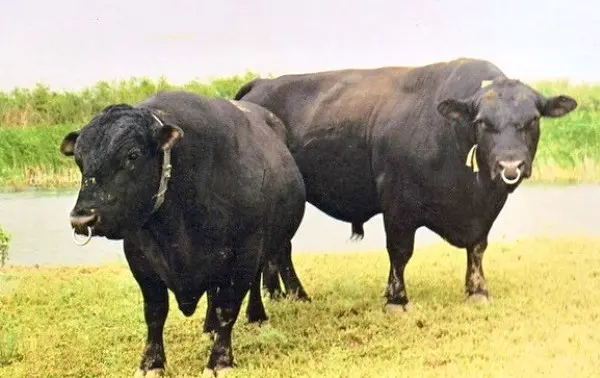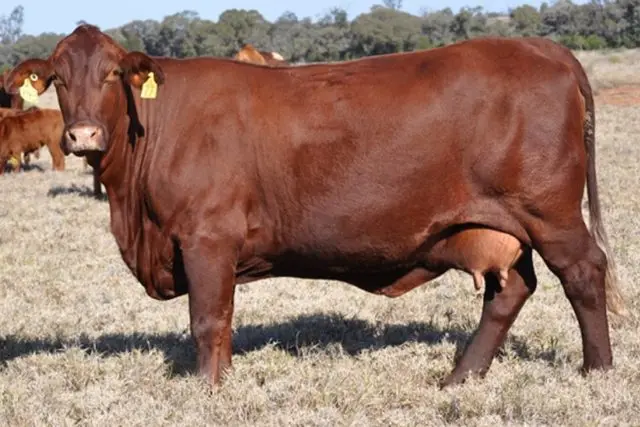Contents
Beginner farmers and homeowners often do not have the necessary skills to choose the right calf. Choosing and buying a healthy calf is a rather difficult task for inexperienced breeders. Regardless of the purpose of acquiring young cattle, it is necessary to familiarize yourself with the features and rules for choosing calves.
Features of the choice of calves
When choosing a calf, first of all, you need to pay attention to the appearance. A healthy calf’s coat should be shiny, supple and soft. Tousled, dull and harsh coat should alert.
Also, when choosing a calf, you should pay attention to the eyes – they must be clean, without purulent crusts. Lachrymation from the eyes and purulent discharge indicate the presence of an inflammatory process (conjunctivitis, keratitis, thelaziosis). The nose of the heifer should be slightly moist, without discharge. When choosing a calf, you should also pay attention to the ears – they must be mobile, not lowered.
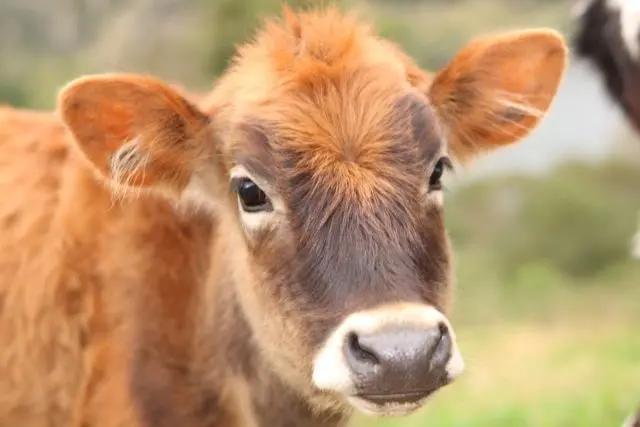
When choosing and examining a heifer, you should also pay attention to the presence of damage to the skin and coat (mites, lice, fungus). Improper feeding, lack of vitamins in the body, metabolic disorders lead to the development of rickets. Often, such individuals note:
- curvature of the limbs;
- lameness;
- hunchback;
- hair loss;
- violation of the digestive tract and respiratory system.
Bald patches in the anus, gluteal region and hock joints often occur with frequent diarrhea, after the use of antibiotics. The tail of the calf should be dry – the tail stained with feces, the sides indicate violations of the digestive system.
When choosing a calf, the future owner should follow his behavior – healthy bulls are active, curious, not afraid of people and have a good appetite.
How to choose a dairy calf
When choosing a dairy calf for productivity, each farmer first of all pursues the goal of obtaining large milk yields of high quality. Choosing dairy calves – future dairy cows – is recommended in breeding farms, livestock complexes, dairy farms or from trusted breeders. They can guarantee that the animal is healthy and provide a pedigree with information about the productivity of the mother of the future dairy cow, as well as information about the sire, the productivity of his mother and daughters.
When choosing a future dairy cow, one should pay attention to the Holstein, Black-and-White and Yaroslavl varieties of cattle, common in Our Country and abroad.
The Holstein variety of cattle is one of the most popular and profitable in Our Country due to its high milk yield – up to 8 tons of milk per year, fat content – 3,7-3,8%, as well as rapid growth and significant live weight of livestock. Animals are very susceptible to changes in microclimate, feeding, housing conditions and other stress factors. Therefore, before making a choice in favor of Holsteins, it is necessary to prepare good conditions for keeping and food supply.
Holsteins are bred in breeding and farming facilities throughout Our Country. However, in private farms, these animals are less common due to capriciousness and complex features of keeping.
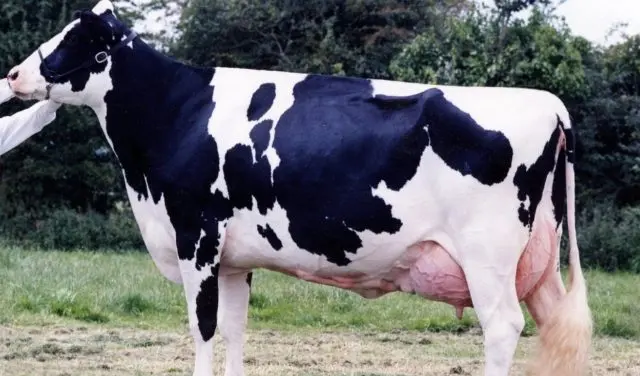
The black-motley breed of cows is distributed throughout Our Country. These animals adapt well to new climatic conditions and maintenance without loss of milk yield. During the lactation period, cows give 6,5 tons (up to 8 tons) of milk with a fat content of 3,5-4%. Heifers reach sexual maturity early – at about 13-14 months of age – and calve easily with a high offspring survival rate of about 95%.

The Yaroslavl breed of cattle is famous for its high milk productivity, unpretentiousness in feeding and maintenance. A cow gives 3,5-6 tons of nutritious milk with a fat content of 4,5% per year. During reproductive age, a healthy cow can produce up to 5 calves. Animals have good immunity. The disadvantages of representatives of this variety of cattle include poorly developed muscles and thin bones.
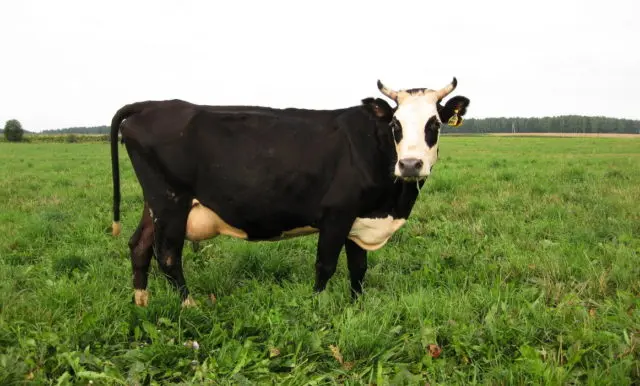
Also in Our Country, the following dairy cattle breeds are common:
- Ayrshire.

- Kostroma.

- Dutch.

- Kholmogorskaya.

- Red steppe.

- Jersey.

Breed | Milk per lactation (305 days), kg | Fat content in milk, % | Weight of an adult animal, kg | |
Cows | Bulls | |||
Ayrshire | 5000 – 7000 | 4,0 – 4,3 | 450 – 480 | 700 – 800 |
black-and-white | 4000 – 6500 | 3,6 – 3,9 | 550 – 650 | 900 – 1000 |
Holstein | 7500 – 8000 | 3,2 – 4,0 | 650 – 700 | 960 – 1200 |
Yaroslavl | 3500 – 6000 | 4,0 – 4,5 | 450 – 500 | 550 – 600 |
Kostromskaya | 4000 – 5000 | 3,9 – 4,0 | 600 – 700 | 1000 – 1200 |
Dutch | 3500 – 4500 | 3,8 – 4,0 | 550 – 580 | 800 – 1200 |
Kholmogorskaya | 3600 – 5000 | 3,6 – 3,9 | 480 – 590 | 850 – 950 |
Red steppe | 4000 – 4500 | 3,7 – 3,9 | 450 – 520 | 800 – 900 |
Dzherseyskaya | 3000 – 4500 | 5,0 – 7,0 | 360 – 400 | 600 – 700 |
How to choose the right calf for fattening
When choosing a calf for fattening, it is advisable to pay attention to meat and meat and dairy representatives of cattle. Specialized breeds of cattle for meat production are characterized by a high growth rate of young stock over a long period, as well as high rates of final live weight and slaughter yield.
The ideal age for buying fattening calves is 1,5–2 months, however, experienced breeders and farmers advise choosing bull calves at least 4–6 months old, and when choosing, you should pay attention to the weight of the animal. Young animals of six months of age are already adapted to eating feed and, with high-quality feeding, begin to quickly build muscle mass with gains of 800-900 g per day.
The Kazakh white-headed variety of cattle is characterized by precocity, easy adaptation to harsh climatic conditions and the ability to quickly gain weight even with a scarce food supply. The weight of a newborn calf is 25-30 kg, with intensive fattening by the age of 15-18 months, the live weight reaches 450-470 kg. The Kazakh white-headed variety is common in the Orenburg, Saratov, Volgograd regions.

The Hereford cattle breed is considered to be the most widespread meat-producing animal in the world. Herefords perfectly adapt to harsh climate conditions and intensively gain weight even with a meager diet. Calves are born quite large, bulls at the age of 18 months weigh about 500-550 kg. Hereford meat is valued for its marbling and high quality. In Our Country, Herefords are common in the Rostov, Saratov, Orenburg, Chelyabinsk, Novosibirsk regions, Altai and Krasnoyarsk territories, and the Far East.
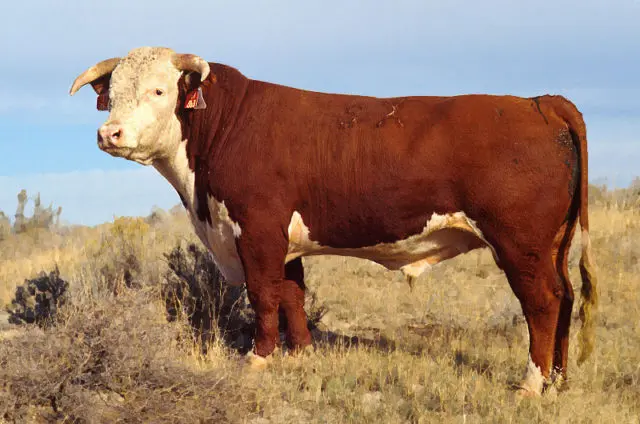
The Kalmyk variety of cattle is notable for its unpretentiousness to the conditions of keeping and feeding. When choosing calves of this breed, one should take into account the fact that these animals have good immunity, perfectly adapt to feeding on pasture. Newborn calves weigh about 24-30 kg, and young animals at the age of 18 months reach live weight indicators of 500-550 kg. The digestive system of these animals is adapted to the digestion of any grass growing in the pasture. The Kalmyk variety is distributed over most of Our Country, Kalmykia, Buryatia, Rostov and Astrakhan regions.
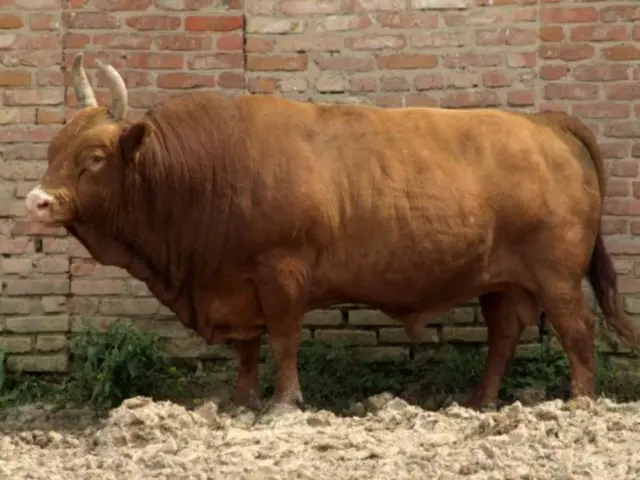
The Aberdeen Angus variety of cattle adapts well to any climate and has excellent immunity. Aberdeen calves are born with a relatively small weight of 20-22 kg, however, by the age of one and a half years, the young, due to intensive growth, reach a weight of 350 kg or more. Aberdeen meat is valued for its marbling, characterized by the presence of streaks of intramuscular fat. In Our Country, this kind of beef cattle is common in the steppe regions, the Orenburg and Volgograd regions, the Stavropol and Altai regions.
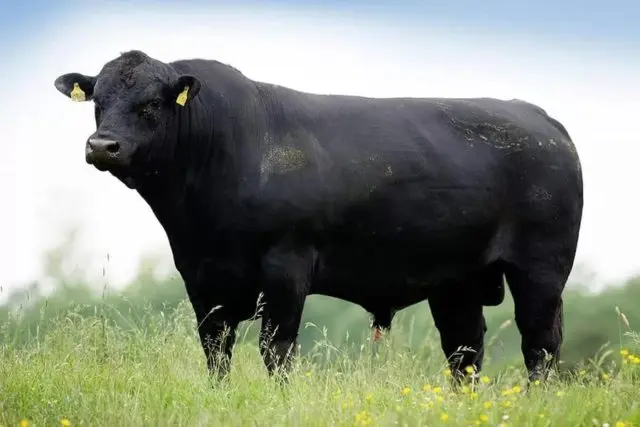
Simmental breed (meat and milk, meat type) is one of the most popular varieties of cattle in Our Country. These animals perfectly adapt to any climatic conditions, are very hardy, mobile, resistant to diseases. Simmentals are valued for high-quality meat with a fat content of no more than 12-17%. The average milk yield of cows is 3000-5000 kg of milk with a fat content of 3,7-4,1%. Newborn calves weigh 40-45 kg, and bulls at the age of 18 months weigh about 400 kg. The Simmental variety of cattle is common in the Belgorod, Voronezh regions, Bashkiria, Altai and Krasnoyarsk territories, and southern regions of Siberia.
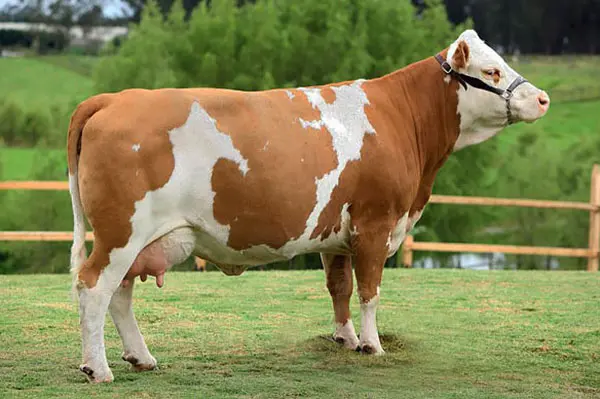
Also in Our Country, the following representatives of cattle breeds for meat production are bred:
- Charolaisskaya.

- Limousinskaya.

- Galloway.

- komola.

- Santa Gertrude.

- Sallers.

| Breed | Calf weight at birth, kg | Average daily weight gain up to the age of 18 months, g | Live weight at the age of 18 months, kg | Live weight of an adult animal, kg | Slaughter yield, % | |
| Cows | Bulls | |||||
| Hereford | 35 – 38 | 900 – 1200 | 350 – 400 | 520 – 620 | 800 – 1100 | 60 – 70 |
| Kazakh white-headed | 25 – 30 | 900 – 1000 | 400 – 450 | 500 – 550 | 850 – 950 | 53 – 65 |
| Kalmyk | 24 – 30 | 800 – 1000 | 450 – 550 | 450 – 550 | 800 – 870 | 55 – 65 |
| Aberdeen Angus | 20- 25 | 900 – 1000 | 350 | 500 – 550 | 750 – 950 | 62 – 65 |
| Shorthorn | 30 – 35 | 1200 – 1500 | 450 – 550 | 500 – 600 | 950 – 1000 | 65 – 70 |
| Charolais | 38 – 42 | 900 – 1400 | 400 | 700 – 800 | 1000 – 1100 | 60 – 65 |
| Limousinskaya | 40 and more | 800 – 1000 | 500 | 580 – 600 | 1000 – 1100 | 65 – 70 |
| Komoly | 30 – 35 | 1000 – 1200 | 620 – 700 | 800 | 1200 – 1250 | 70 – 80 |
| Simmental (meat and milk) | 40 – 45 | 900 – 1200 | 350 – 400 | 600 – 650 | 900 – 1200 | 65 – 70 |
| Galloway | 25 – 27 | 800 – 900 | 400 – 450 | 450 – 500 | 800 – 850 | 58 – 62 |
| Sallers | 34 – 40 | 900 – 1100 | 600 – 650 | 650 – 800 | 1000 – 1300 | 60 – 65 |
| Santa Gertrude | 29 – 35 | 1000 – 1100 | 520 – 600 | 550 – 600 | 800 – 1000 | 63 – 65 |
Tips and Tricks
When choosing a calf for fattening, it is advisable to give preference to those breeds that are most common in the region. Otherwise, there may be difficulties with acclimatization. The severe stress that an animal experiences during transportation, climate change and conditions of detention will certainly affect its health.
Do not rush to purchase and choose a calf only from photographs. When choosing and purchasing a calf, you must carefully examine the animal, communicate with the breeder, study the documents and ask all your questions.
When choosing and buying a calf at a large livestock enterprise, it is necessary to clarify the age, weight, and obtain information about the vaccinations made.
Also, when choosing young animals, you should pay attention to the conditions of keeping and feeding the calves. Young animals raised in dirty calves, in unsanitary conditions (dirty feeders, drinkers), and also not receiving high-quality feed in the required quantities, regardless of breed and value, will often get sick and will not even reach average productivity indicators.
Conclusion
In order to choose the right calf for a farm or subsidiary, first of all, it is necessary to determine the goals for the acquisition of cattle. For dairy farms, the Holstein, Kostroma, black-and-white, Dutch breeds will be an ideal choice. To breed livestock in order to obtain a high-quality meat product with a high slaughter yield, one should pay attention to healthy strong calves of the Kalmyk, Kazakh white-headed, Hereford and Simmental varieties of cattle.











